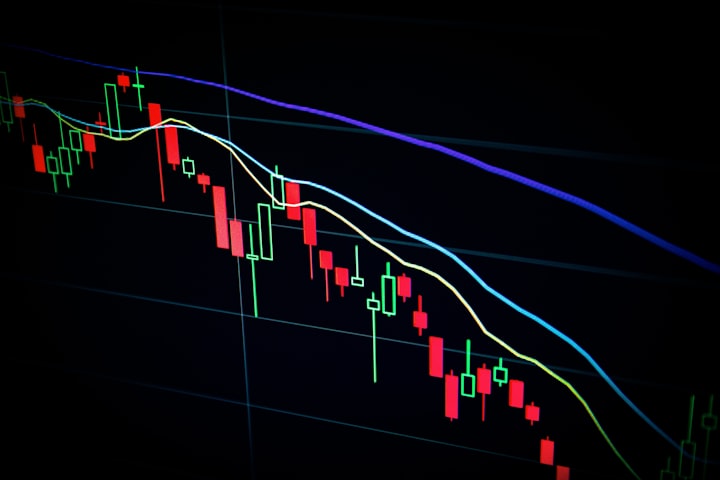
Introduction
Trading can be a lucrative investment opportunity, however it can also be risky and sometimes losses are inevitable. It is important to understand how to recover from a trading loss to ensure that you do not become discouraged and quit investing altogether. This article will provide an introduction and outline of strategies to help you recover your trading losses and get back on track. It will cover topics such as assessing the situation and understanding the cause of the loss, formulating an effective plan, and developing a recovery strategy. With these tips and tricks, you will be able to get back on track with your trading and ensure a prosperous future.
How to make more profit in trading
Develop a trading plan with clear rules and objectives. Establish a trading strategy, risk management system and performance goals to ensure consistent success and profitability.
Monitor your trading performance and analyze data to identify areas of improvement. Keep track of your wins and losses, and adjust your trading plan and strategy accordingly.
Utilize a range of different trading tools. These can help you to identify trends, analyze risk and maximize profits.
Take advantage of trading signals when available. Expert trading signals can provide valuable insight into the markets and help you make better trading decisions.
Stay up-to-date with market news and analysis. Monitor news sources, research reports and economic indicators to identify potential trading opportunities.
Exercise discipline and patience. Trading is a long-term game, so don’t get too greedy or make rash decisions.
Diversify your investments and spread your risk. Don’t put all your eggs in one basket.
Use stop-loss orders to limit losses. Stop-loss orders can help you limit losses if the market moves against you.
Take regular breaks. Trading can be stressful, so be sure to take regular breaks and get a good night’s sleep.
Practice with a demo account. This can help you get comfortable with trading and develop your skills before you start investing real money.
How to develop a strong trading plan
Educate yourself on the fundamentals of trading. Take the time to learn the basics of trading, such as different types of markets, technical analysis, and risk management.
Develop a trading plan that outlines your goals, strategy, and timeline. Be specific and realistic with your goals and create a plan that is tailored to your trading style and experience.
This trade command center will also help you in trading and recover your losses (this is an affiliate link meaning that if you click on one of the links and purchase an item, I may receive a commission. All opinions, however, are my own and I only recommend products or services I use personally and believe will add value to my readers)
Set up a trading journal. Track your trades, analyze your results, and adjust your strategy as needed.
Set limits on the amount of risk you’re willing to take. Make sure to diversify your portfolio and never risk more money than you can afford to lose.
Research different types of trades. Consider different strategies, such as day trading, swing trading, and position trading, to determine which style suits you best.
Use stop losses to protect your capital. Always set a stop loss to limit your losses if the market moves against you.
Use a practice account before trading with real money. Take the time to practice with a demo account so you can build your confidence and develop your skills.
Monitor the markets and stay up-to-date on news. Always keep track of the markets and follow the news to stay informed about potential trading opportunities.
Be patient and disciplined. Be patient and stick to your strategy. Don’t make trades on impulse or get swayed by emotions.
Take your time and don’t rush into trades. Don’t let yourself get pressured into making a trade. Take the time to analyze the market and make sure you’re making informed decisions.
How to analysis chart in tradingview
Start by researching the underlying asset. Understand the fundamentals, past performance and current market conditions.
Analyze the chart to identify any patterns or trends in the data. Look for support/resistance levels, and patterns like head and shoulders, double tops and bottoms, etc.
Identify the time frame you will be analyzing. Short-term charts can be used for day trading and swing trading, while longer-term charts are better for longer-term investments.
Use technical indicators to identify potential entry and exit points. Examples include moving averages, Bollinger bands, MACD, RSI, etc.
Use trend lines to draw out resistance and support lines.
Consider using Fibonacci retracements to identify potential entry and exit points.
Pay attention to volume and open interest to understand the intensity of trading activity.
Analyze the chart to identify gaps, which can indicate a sudden change in the market.
Use news and economic data to identify potential opportunities.
Take your time and practice. Chart analysis is a skill that takes time to master.
Conclusion
The key to recovering losses in trading is to take a disciplined and strategic approach. Start by understanding the markets and identifying patterns that will help you make better trading decisions. Develop a trading plan that outlines your risk tolerance and how you will manage your trades. Take the time to do research and understand the market dynamics. Utilize the tools available to you, such as stop losses and take profits, to help protect your capital. Finally, practice good money management and don’t let emotions cloud your decisions. With these steps, you can increase the likelihood of recovering losses in trading.
About the Creator
Aarushter
Entrepreneur and digital marketing expert with a passion for teaching others how to make money online. With over a decade of experience in e-commerce and online marketing






Comments
There are no comments for this story
Be the first to respond and start the conversation.